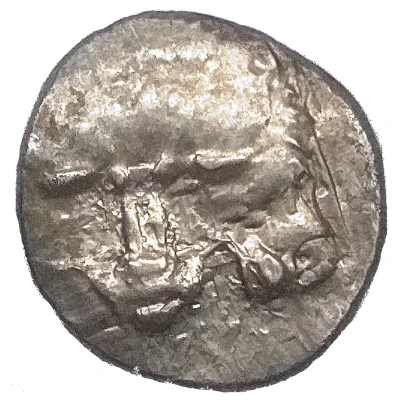


© Alema66
⅙ Stater - Mithrapata 390 BC - 370 BC
| Silver | 1.37 g | 12.5 mm |
| Issuer | Dynasts of Lycia (Achaemenid Satrapies) |
|---|---|
| Dynast | Mithrapata (circa 390-370 BC) |
| Type | Standard circulation coin |
| Years | 390 BC - 370 BC |
| Value | ⅙ Silver Stater (½) |
| Currency | Drachm |
| Composition | Silver |
| Weight | 1.37 g |
| Diameter | 12.5 mm |
| Shape | Round (irregular) |
| Technique | Hammered, Incuse |
| Orientation | Variable alignment ↺ |
| Demonetized | Yes |
| Updated | 2024-10-10 |
| Numista | N#152259 |
|---|---|
| Rarity index | 92% |
Reverse
Triskeles in the middle, astragalos in one section and all within incuse square
Script: Lycian
Lettering: 𐊎𐊆𐊉𐊕𐊀𐊓𐊀𐊗𐊀
Translation: Mithrapata
Comment
Several variants of this type exist, with differing "privy" marks.It isn't known if these denote magistrates, dates, mints, or another significance.
Interesting fact
The Mithrapata coin is an example of a coin that was used in the ancient Persian Empire, specifically in the region of Lycia, which is now part of modern-day Turkey. The coin features an image of a mythological creature called a mithra, which was a symbol of the Persian god Mithra, who was revered as a god of contracts, oaths, and loyalty. The coin's design and inscriptions reflect the cultural and religious influences of the Persian Empire during that time period.



